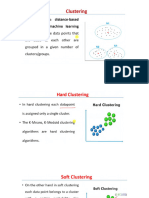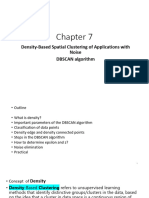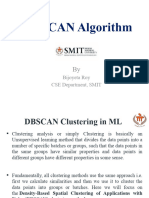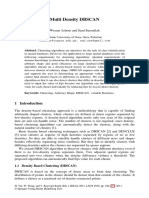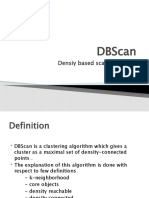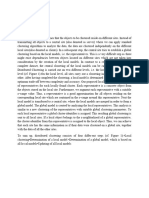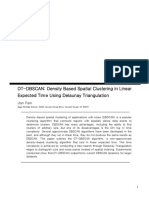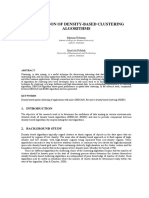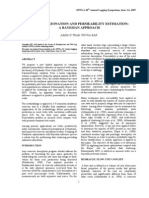0% found this document useful (0 votes)
47 views8 pagesDensity Based CA
DBSCAN clustering identifies clusters based on density rather than distance like K-means. It does not require specifying the number of clusters beforehand. DBSCAN uses parameters for neighborhood distance and minimum points to define core, border, and outlier points and expand clusters from core points.
Uploaded by
Nandini WhateverCopyright
© © All Rights Reserved
We take content rights seriously. If you suspect this is your content, claim it here.
Available Formats
Download as PDF, TXT or read online on Scribd
0% found this document useful (0 votes)
47 views8 pagesDensity Based CA
DBSCAN clustering identifies clusters based on density rather than distance like K-means. It does not require specifying the number of clusters beforehand. DBSCAN uses parameters for neighborhood distance and minimum points to define core, border, and outlier points and expand clusters from core points.
Uploaded by
Nandini WhateverCopyright
© © All Rights Reserved
We take content rights seriously. If you suspect this is your content, claim it here.
Available Formats
Download as PDF, TXT or read online on Scribd
/ 8

















